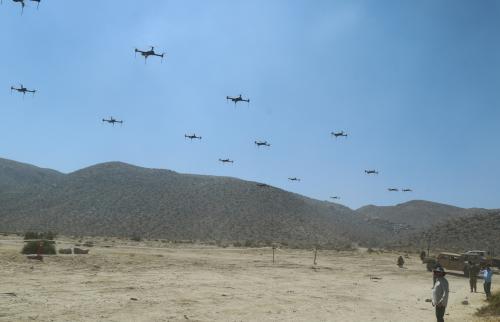The growth in our use of unmanned systems has taken place so rapidly that we often forget how far we have come in just a short time. While U.S. forces went into Iraq with only a handful of drones in the air (all of V Corps had just one), by the end of 2008, there were 5,331 unmanned aircraft systems in the American inventory, from vigilant Global Hawks and armed Predators that circle thousands of feet overhead to tiny Ravens that peer over the next city block. A similar explosion happened on the ground, where zero unmanned ground vehicles were used in a tactical sense during the 2003 invasion; by the end of 2008, the overall inventory crossed the 12,000 mark, with the first generation of armed ground robotics arriving that year as well. And notably, these are just the first generation, much like the iPod, already outdated by the time they hit the marketplace and battlespace.
In many ways, the most apt historic parallel to this era may well turn out to be World War I. Back then, strange, exciting new technologies, which had been science fiction a few years earlier, were introduced and then used in greater numbers on the battlefield. They did not really change the fundamentals of the war, and in many ways the technology was balky and fighting remained frustrating. But these early models did prove useful enough that it was clear that the new technologies were not going away and militaries had better figure out how to use them most effectively. It also became clear with such new technologies that their effects would ripple out, reshaping areas that range from the experience of the soldier at war and how the media reports war to asking troubling new questions about the ethics and laws of war. Much the same is just starting to happen with our unmanned systems today.



Commentary
Wired for War? Robots and Military Doctrine
January 22, 2009